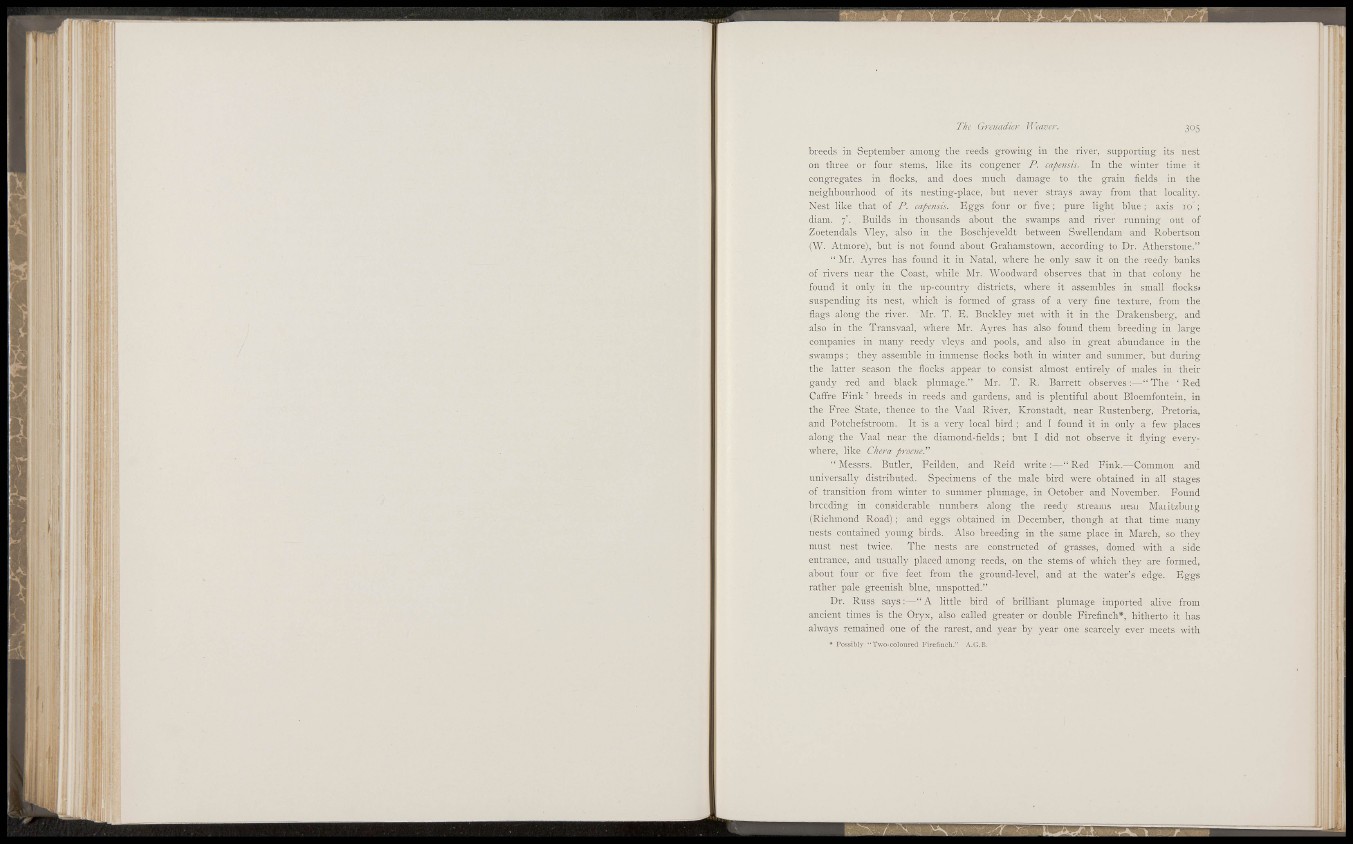
The (jrcnadicr Wem'cr.
11 ¡1
i
breeds in September among the reeds growing in the river, supporting its nest
on three or fonr stems, like its congener P. cafitusis. In the winter time it
congregates in flocks, and does much damage to the grain fields in the
neighbourhood of its nesting-place, but never stra3.'s away from that localitj'.
Nest like that of P. capensis. Eggs fonr or five ; pure light blue ; axis lo' ;
diam. 7". Builds in thousands about the swamps and river running out of
Zoetendals Vley, also in the Boschjeveldt between Swellendam and Robertson
(W. Atmore), but is not found about Grahamstown, according to Dr. Atherstone."
" Mr. Ayres has found it in Natal, where he only saw it on the reedv banks
of rivers near the Coast, while Mr. Woodward observes that in that colony he
found it only in the up-country districts, where it assembles in small flocks>
suspending its nest, which is formed of grass of a ver}' fine texture, from the
flags along the river. Mr. T. E. Buckley met with it in the Drakensberg, and
also in the Transvaal, where Mr. Avres has also found them breeding in large
companies in man)^ reedy vleys and pools, and also in great abundance in the
swamps; thej' assemble in immense flocks both in winter and summer, but dtiring
the latter season the flocks appear to consist almost entirely of males in their
gaudy red and black plumage." Mr. T. R. Barrett observes:—"The 'Red
Caffre Fink' breeds in reeds and gardens, and is plentiful about Bloemfontein, in
the Free State, thence to the Vaal River, Kronstadt, near Rustenberg, Pretoria,
and Potchefstroom. It is a very local bird ; and I found it in only a few places
along the Vaal near the diamond-fields; but I did not observe it flying everywhere,
like Chera procne."
"Messrs. Bntler, Feilden, and Reid write:—"Red Fink.—Common and
universallji distributed. Specimens of the male bird were obtained in all stages
of transition from winter to summer plumage, in October and November. Found
breeding in considerable numbers along the reedjf streams near Maritzburg
(Richmond Road) ; and eggs obtained in December, though at that time many
nests contained 3'oung birds. Also breeding in the same place in March, so they
must nest twice. The nests are constructed of grasses, domed with a side
entrance, and usually placed among reeds, on the stems of which they are formed,
about four or five feet from the ground-level, and at the water's edge. Eggs
rather pale greenish blue, unspotted."
Dr. Rnss says:—" A little bird of brilliant plumage imported alive from
ancient times is the Orj'x, also called greater or double Firefinch*, hitherto it has
always remained one of the rarest, and year by year one scarcely ever meets with
* Po.ssiblv "Two-coloured I'^ircfincli." .-V.Ci.Ii.
i t